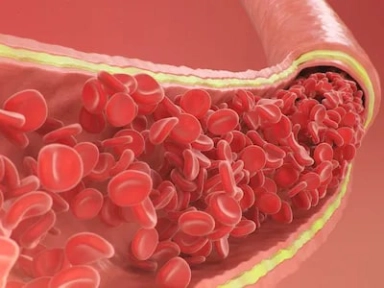ESC Lp(a) in Clinical practice EAS Consensus statement
Lp(a) in clinical practice - Risk estimation and how to reduce its associated risk: A European Atherosclerotic Society consensus statement
Kronenberg F. Oral presentation. Presented at 43rd European Society of Cardiology (ESC) 2022. Kronenberg F, et al. Eur Heart J. 2022.
Key takeaway
In this session, Prof. F. Kronenberg presented the following important highlights from the EAS consensus statement on Lp(a):
- A continuous association was found between Lp(a) and major CVD*
- Lp(a) concentration should always be interpreted in the context of:
- Other risk factors
- Absolute global CV risk
- Lp(a) is not considered a risk factor for venous thrombosis, but is a risk factor for ASCVD, AVS, and T2DM (possibly)
- Lp(a) should be measured at least once in adults to identify those with high CV risk
- If Lp(a) concentration is high, consider intensified risk factor management as early as possible by:
- Lifestyle modifications
- Medications
- Specific Lp(a)-lowering therapies are currently in phase 2/3 trials
Why this matters
- Since the 2010 consensus paper, considerable new evidence from epidemiological and genetic studies on Lp(a) (on causality of CVD) and new findings on outcomes (e.g., AVS and DM) became available.
- Therefore, there was a need for a new consensus statement and for novel recommendations to incorporate Lp(a) in clinical practice.
Key highlights
Consensus panel recommendations
| Lp(a) testing | To identify individuals at high risk for CVD, Lp(a) should be measured at least once in all adults |
| Screening youth with a family history of high Lp(a) or premature ASCVD or a history of stroke without other identifiable risk factors is recommended | |
| Family cascade screening is recommended for individuals with high Lp(a) with a family history of (very) high Lp(a) or ASCVD or in the settings of FH | |
| Lp(a) measurement | Laboratories should use an Lp(a) assay insensitive to apo(a) isoform and traceable to official reference materials |
|
If available, Lp(a) should be measured in molar units If not available, the units that were used for calibrating the assay should be used for reporting |
|
|
Clinical guidelines should consider using risk thresholds with ‘gray’ zones rather than absolute values to determine risk of CHD:
|
|
| Managing high Lp(a) concentrations | For those with high Lp(a), early ‘traditional’ risk factor management is recommended in the absence of specific Lp(a)-lowering therapies that also considers their absolute CV risk and Lp(a) concentration |
| Address all CV risk factors optimally as per guideline recommendations among patients with high Lp(a) concentrations | |
| Consider lipoprotein apheresis in patients with very high Lp(a) and progressive CVD despite optimal management of risk factors. | |
| For high Lp(a) concentrations, niacin and “routine aspirin” are not advised |
Incorporating Lp(a) in risk estimation
- Increasing Lp(a) categories causes an incremental increase in absolute risk (AR) of ASCVD
- This increase in AR is measured using estimated baseline absolute lifetime risk†, baseline risk categories based on traditional risk factors (5%, 10%, 15%, 20%, and 25%), and additional risk above the estimated baseline risk caused by the respective Lp(a) concentration categories (7, 30, 50, 75, 100, 150 mg/dL):
| Baseline risk of ASCVD events from traditional risk factors (%) | Plasma Lp(a) concentration (mg/dL) | Absolute lifetime risk (%) |
Increase in absolute risk |
| 5 | 50 | 50 | ≈1.4-fold |
| 15 | 50 | 20.9 | |
| 25 | 50 | 34.9 | |
| 5 | 150 | 13.6 | ≈2.7-fold |
| 15 | 150 | 40.8 | |
| 25 | 150 | 68.1 | |
| Absolute risk might be underestimated substantially if Lp(a) concentration is not considered | |||
‘Starting age’ of LDL-C lowering
Entire global CV risk can be lowered based on ‘starting age’ of LDL-C lowering
| Plasma Lp(a) concentration (nmol/L) | Age of LDL-C lowering (years) | LDL-C reduction needed (mmol/L) |
| 120 | 30 | 0.4 |
| 60 | 0.8 | |
| 320 | 30 | 1.2 |
| 60 | 2.3 | |
| Starting prevention early is the key | ||
Emerging specific Lp(a)-lowering therapies targeting Lp(a) production
(Tromp et al. 2020)
- In those with very high Lp(a) level, absolute ASCVD risk is mainly attributable to Lp(a)
- Managing traditional risk factors is important, but not enough
- Specific Lp(a)-lowering therapies are urgently required
| Lp(a)-lowering therapy | Dosing | Clinical trial phase |
| ASO therapy | Monthly | Phase 3 ongoing (results expected in 2025) |
| Two siRNA technologies | Longer acting |
1. Dose-finding study ongoing 2. Phase 1 trial complete |
ASCVD, Atherosclerotic Cardiovascular Disease; ASO, Antisense Sligonucleotide; Lp(a), Lipoprotein a; siRNA, small Interfering Ribonucleic Acid.
AR, Absolute Risk; ASCVD, Atherosclerotic Cardiovascular Disease; AVS, Aortic Valve Stenosis; CABG, Coronary Artery Bypass Graft; CHD, Coronary Heart Disease; CV, Cardiovascular; CVD, Cardiovascular Disease; DM, Diabetes Mellitus; EAS, European Atherosclerotic Society; FH, Familial Hypercholesterolemia; LDL-C, Low-Density Liporotein Cholesterol; Lp(a), Lipoprotein (a); MI,Myocardial Infarction; PCI, Percutaneous Coronary Intervention; T2DM, Type 2 Diabetes Mellitus.
Visit https://eas.to/lpa2022 for more information (e.g., slide set, Lp(a) risk and benefit calculator) or refer the publication Kronenberg F, et al.
*Defined as composite of first occurrence of fatal or non-fatal MI, fatal or non-fatal MI ischemic stroke, or coronary revascularization (PCI or CABG).
†Baseline estimated lifetime risk calculated using JBS3 lifetime risk estimating algorithm.
- Kronenberg, F. Lp(a) in clinical practice - Risk estimation and how to reduce its associated risk: A European Atherosclerotic Society consensus statement. Presented at the European Society of Cardiology (ESC 2022) Congress on August 29, 2022.
- Kronenberg F, Mora S, Stroes ESG, Ference BA, Arsenault BJ, Berglund L, et al. Lipoprotein(a) in atherosclerotic cardiovascular disease and aortic stenosis: A European Atherosclerosis Society consensus statement. Eur Heart J. 2022. doi: 10.1093/eurheartj/ehac361. Online ahead of print. PMID: 36036785.


.webp/jcr:content/Lipid-lowering-therapy-thumb%20(2).webp)

.webp/jcr:content/Evaluation-of-lipid-management-following-ACS-thumb%20(1).webp)